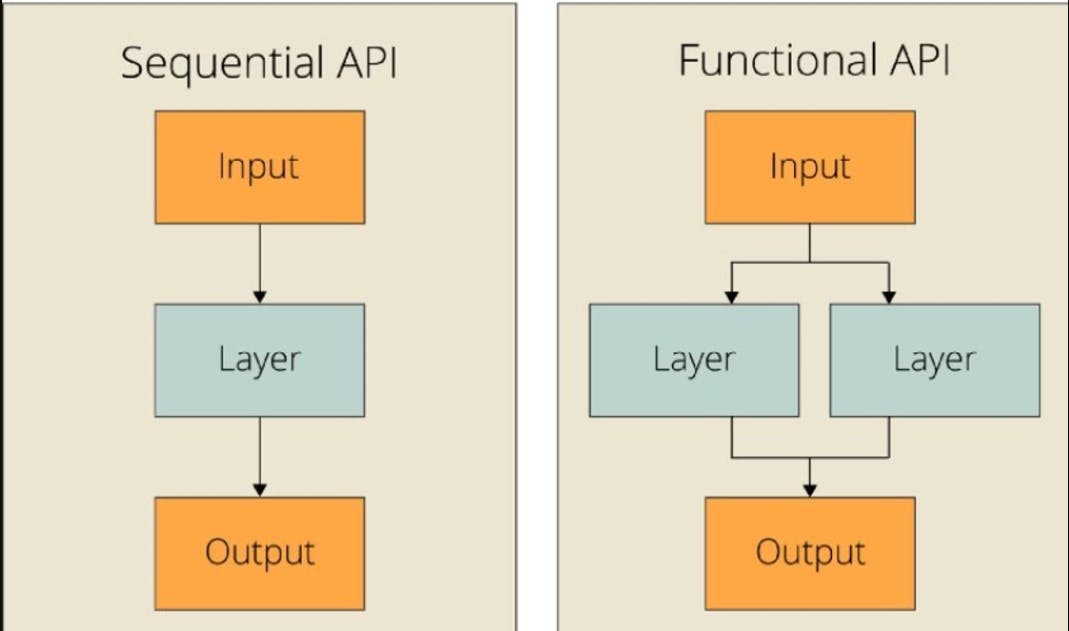Intro to Functional API: Empowering Deep Learning Architectures🧠
Imagine you're handed a task: predicting emotions from images, essentially an image classification project. How would you approach it?
Traditionally, you might think of building a neural network model with convolutional layers, dense layers, or even leveraging a pre-trained model. Sounds familiar, right?
Now, let's add a twist. Along with classifying emotions, you're asked to predict the person's age. How would you tackle this challenge?
One common approach would be to build two separate neural network models, one for emotion classification and another for age prediction. But is this the most efficient way?
This is where the FUNCTIONAL API comes in.
What is the Functional API?
The Functional API is a critical component of popular deep learning libraries like TensorFlow and Keras. It's a higher-level interface for building neural networks that offers more flexibility than the Sequential API. While the Sequential API is suitable for simple, linear network structures, the Functional API provides the versatility needed for complex, non-linear models.
Parallel Paths for Model Building
One of the standout features of the Functional API is its ability to create parallel paths within a neural network architecture. Instead of a single linear path, the Functional API allows you to define multiple branches that process the input data in parallel. This is particularly useful when dealing with complex data or tasks that require capturing different aspects of the input.
Concatenating Outputs
After processing the data through these parallel paths, the Functional API allows you to concatenate or merge the outputs. This step is essential for combining the knowledge learned by different branches of the network. It's like having multiple experts working on different aspects of a problem and then pooling their insights to make a more informed decision.
Use Cases for the Functional API
The Functional API shines in various deep-learning applications:
Image Processing: When working with images, you can design a neural network that simultaneously processes different image features like colour, texture, and shape. The Functional API enables you to create separate branches for each feature, and then merge them for a comprehensive understanding of the image.
Natural Language Processing (NLP): In NLP tasks, the Functional API allows you to build models that analyze the semantics, syntax, and context of text data in parallel. This is invaluable for tasks like sentiment analysis, machine translation, or chatbot development.
Multi-Input and Multi-Output Networks: The Functional API is essential when dealing with models that have multiple inputs or outputs. For instance, in autonomous driving, a model may take both visual inputs from cameras and sensor data as inputs and produce multiple outputs such as steering angle and acceleration.
Sample Functional API model
from tensorflow.keras.layers import Input, Dense, concatenate
from tensorflow.keras.models import Model
# Define input layers
input1 = Input(shape=(64,))
input2 = Input(shape=(32,))
# Define branches
branch1 = Dense(64, activation='relu')(input1)
branch2 = Dense(32, activation='relu')(input2)
# Merge the branches
merged = concatenate([branch1, branch2])
# Additional layers for further processing
output = Dense(10, activation='softmax')(merged)
# Create the model
model = Model(inputs=[input1, input2], outputs=output)

Conclusion
The Functional API is a versatile and powerful tool for building complex neural network architectures. Its ability to create parallel paths and merge outputs allows deep learning practitioners to design models that excel in a wide range of tasks. As you dive deeper into the world of deep learning, consider incorporating the Functional API into your toolkit—it's a game-changer for tackling intricate problems with grace and efficiency.
Thanks for reading the article. I really hope you got value out of this.